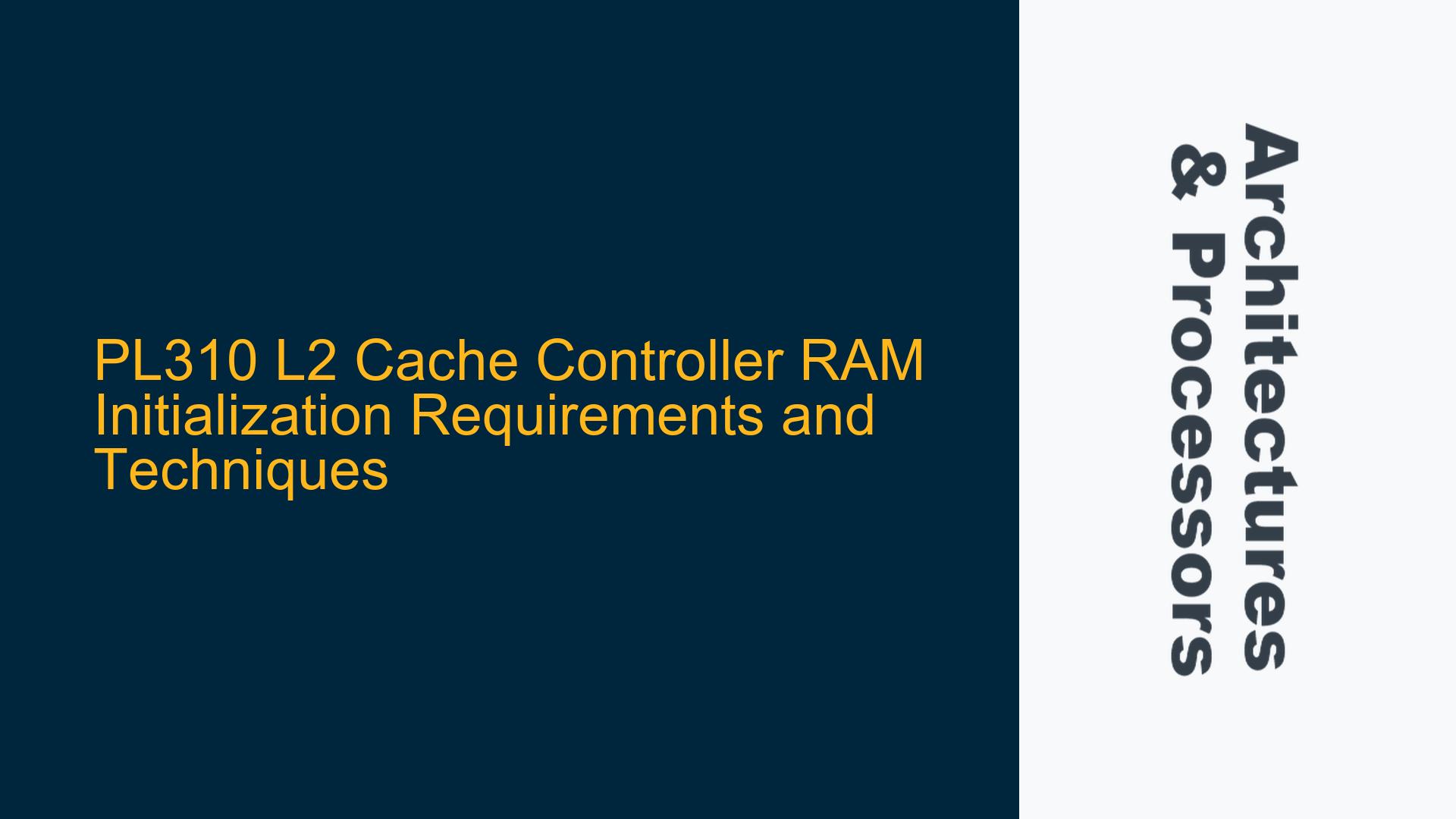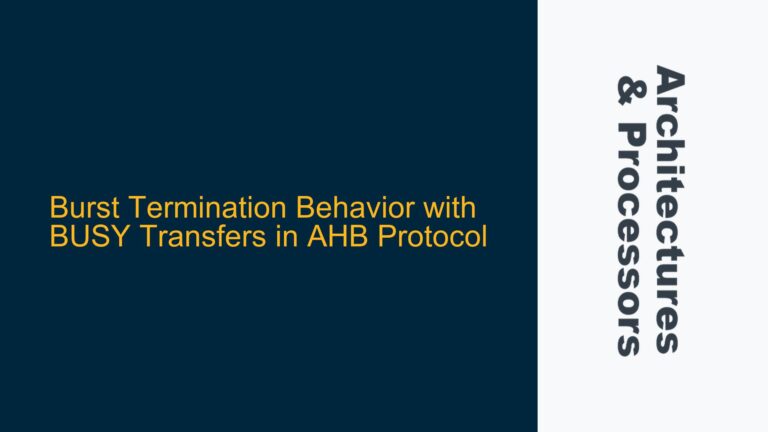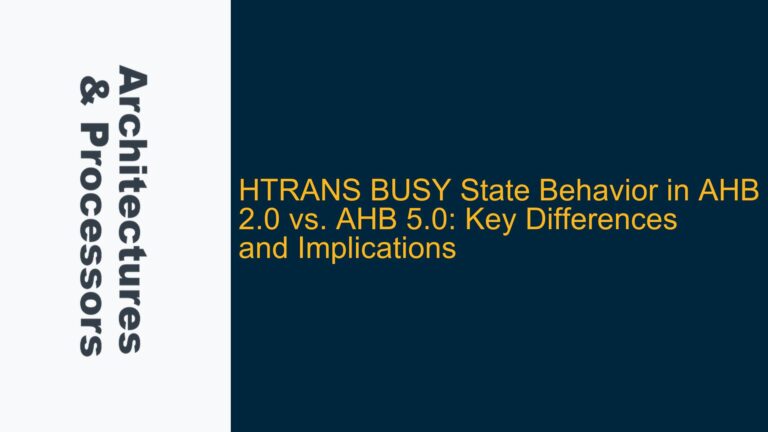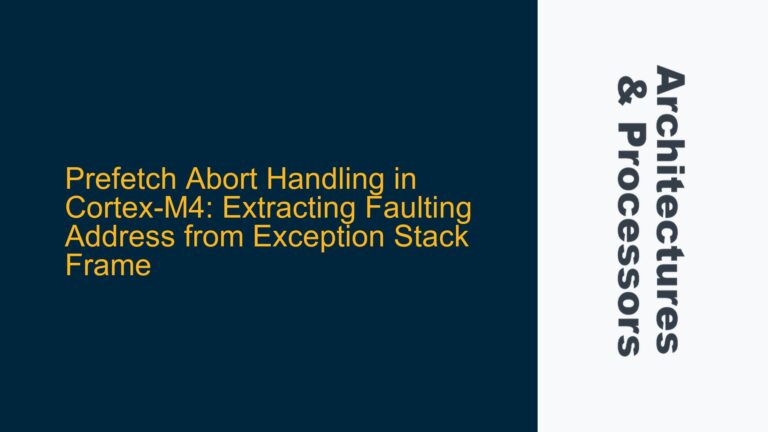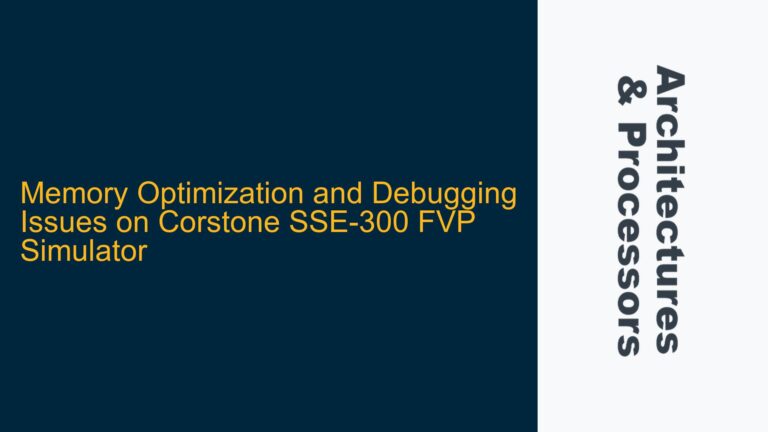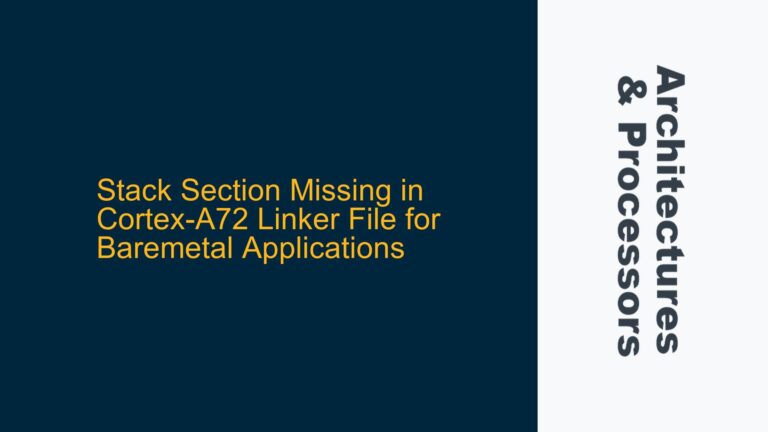PL310 L2 Cache Controller RAM Initialization Overview
The PL310 L2 Cache Controller, a critical component in ARM-based systems, utilizes two primary types of RAM: Data RAM and Tag RAM. These RAMs are integral to the cache’s operation, storing cached data and metadata, respectively. A common question arises regarding the initialization of these RAMs, particularly when integrating custom SRAM macros into a system design. The PL310’s RAM models, as provided by ARM, initialize their memory contents to zero. This behavior raises important considerations for system designers: whether zero initialization is mandatory, and if so, how to achieve it effectively.
The Data RAM holds the actual cached data, while the Tag RAM stores metadata such as cache tags, valid bits, and dirty bits. Proper initialization of these RAMs is crucial to ensure predictable cache behavior, avoid data corruption, and prevent undefined system states. The PL310’s reliance on zero-initialized RAMs suggests that the hardware expects a clean slate upon startup. However, the responsibility for ensuring this initialization often falls on the system designer, especially when custom SRAM macros are employed.
Understanding the implications of RAM initialization requires a deep dive into the PL310’s architecture. The PL310 is designed to operate with the assumption that its internal RAMs are initialized to zero. This assumption is embedded in the cache controller’s state machine and its handling of cache operations. For instance, the cache controller may interpret uninitialized Tag RAM entries as valid cache lines, leading to incorrect cache hits or misses. Similarly, uninitialized Data RAM could result in the retrieval of stale or corrupt data, compromising system integrity.
The initialization process is further complicated by the timing constraints and the need to maintain cache coherency. The PL310 operates in a multi-core environment where cache coherency is maintained through hardware mechanisms such as the AXI Coherency Extensions (ACE). Any delay or error in RAM initialization could disrupt these mechanisms, leading to coherency violations and system instability. Therefore, the initialization process must be carefully designed to align with the PL310’s operational requirements and the broader system architecture.
Implications of Uninitialized PL310 Data and Tag RAMs
The consequences of failing to initialize the PL310’s Data and Tag RAMs can be severe, ranging from subtle performance degradation to catastrophic system failures. When the Data RAM is uninitialized, the cache may return incorrect data to the processor, leading to erroneous computations or data corruption. This is particularly problematic in safety-critical systems where data integrity is paramount. For example, in automotive or medical applications, uninitialized cache data could result in incorrect sensor readings or control signals, potentially endangering lives.
The Tag RAM, which stores metadata about the cache lines, is equally critical. Uninitialized Tag RAM can cause the cache controller to misinterpret the state of cache lines. For instance, an uninitialized Tag RAM entry might be interpreted as a valid cache line, leading to a cache hit when the data is actually stale or invalid. This can result in the processor using outdated or incorrect data, leading to unpredictable behavior. Conversely, a valid cache line might be misinterpreted as invalid, causing unnecessary cache misses and degrading system performance.
In multi-core systems, the implications of uninitialized RAMs are even more pronounced. The PL310’s cache coherency mechanisms rely on accurate metadata in the Tag RAM to manage shared data across multiple cores. If the Tag RAM is uninitialized, the cache controller may fail to maintain coherency, leading to data inconsistencies between cores. This can result in race conditions, deadlocks, or other synchronization issues, severely impacting system reliability and performance.
Moreover, the PL310’s interaction with other system components, such as the memory controller and DMA engines, can be affected by uninitialized RAMs. For example, a DMA transfer might overwrite cached data without proper invalidation, leading to data corruption. If the Tag RAM is uninitialized, the cache controller might not detect this overwrite, resulting in the processor using stale data. This highlights the importance of ensuring that both the Data and Tag RAMs are properly initialized before the cache controller becomes operational.
Techniques for Initializing PL310 Data and Tag RAMs
Initializing the PL310’s Data and Tag RAMs requires a systematic approach that considers both the hardware and software aspects of the system. The goal is to ensure that the RAMs are zeroed out before the cache controller starts operating, while minimizing the impact on system startup time and performance. Several techniques can be employed to achieve this, each with its own advantages and trade-offs.
One common approach is to use the processor to write zeros to the entire address range of the Data and Tag RAMs during system initialization. This can be done in a bootloader or early startup code, before the cache controller is enabled. The advantage of this method is that it is straightforward and does not require additional hardware. However, it can be time-consuming, especially for large cache sizes, and may delay system startup.
Another technique is to leverage the PL310’s built-in initialization capabilities, if available. Some versions of the PL310 may provide registers or commands that allow the cache controller to initialize its internal RAMs automatically. This can significantly reduce the initialization time and simplify the software implementation. However, this approach is dependent on the specific features of the PL310 implementation and may not be available in all cases.
For systems with custom SRAM macros, hardware-based initialization can be an effective solution. This involves designing the SRAM macros to initialize their contents to zero upon power-up or reset. This can be achieved using specialized circuitry that writes zeros to all memory locations during the initial power-up sequence. The advantage of this method is that it offloads the initialization task from the processor, reducing startup time and software complexity. However, it requires additional hardware design effort and may increase the complexity of the SRAM macros.
In multi-core systems, coordination between cores is essential to ensure that the RAMs are initialized correctly. One core can be designated as the master responsible for initializing the cache RAMs, while the other cores wait for the initialization to complete. This can be implemented using synchronization primitives such as barriers or semaphores. The master core can then enable the cache controller once the initialization is complete, ensuring that all cores start with a clean cache state.
Regardless of the technique used, it is important to verify that the initialization has been performed correctly. This can be done by reading back the contents of the Data and Tag RAMs and checking that they are zeroed out. Any discrepancies should be investigated and addressed before enabling the cache controller. Additionally, the initialization process should be tested under various conditions, such as different power-up sequences and reset scenarios, to ensure robustness.
In conclusion, the initialization of
